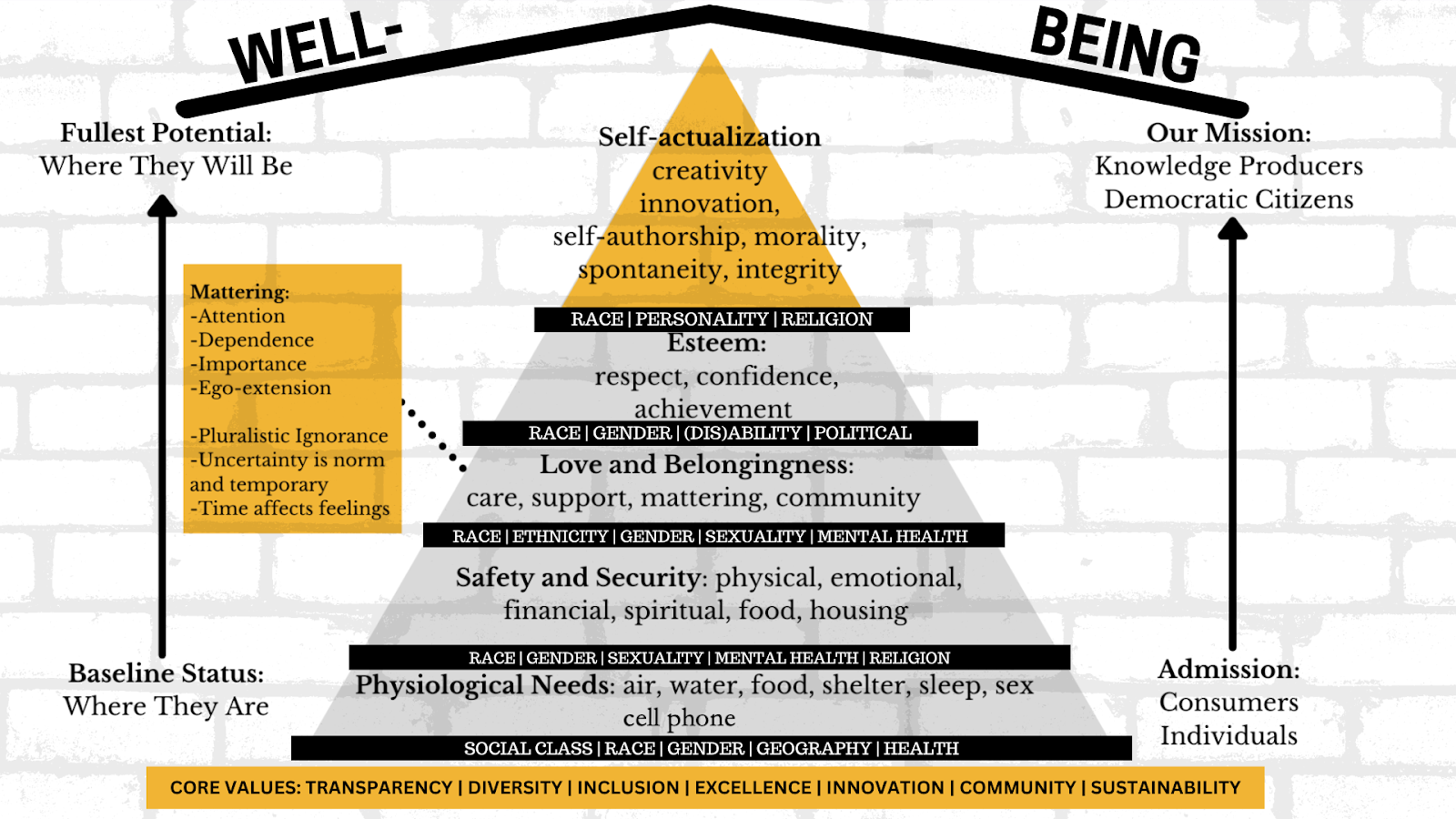A
There can be no question that this reflects a growing infrastructure to support belonging for all faculty, staff, and students in higher education. Despite these shifts and scaling of efforts, “no one has perfected a blueprint for belonging,” Liu concluded. That’s likely because though everyone is talking about it, few seem to know what to do about it. This is the topic we took to task in “Fostering Healthier Campuses: Applying Sense of Belonging Theory to Student Affairs Research and Practice” at the recent annual meeting of NASPA–Student Affairs Administrators in Higher Education.
2025 NASPA CONFERENCE
NASPA brought together over 6,600 student affairs professionals from across the country to New Orleans, Louisiana for connection, reflection, and renewal, three anchors of this year’s theme. Being in “The Big Easy” is significant according to NASPA President and long-time student success champion, Dr. Amelia Parnell, who shared on LinkedIn: “I’ll tell anyone that student affairs professionals are some of the most thoughtful people in higher education and our time together in New Orleans confirmed it for me again.” The 5-day annual meeting consisted of keynote speakers, sponsored receptions, and dozens of educational sessions and programs. Interestingly, dozens of conference sessions, like ours, had “belonging” somewhere in the title, according to NASPA’s mobile app.
Likely a testament to the urgency of the moment and relevance of the message, our 50-minute session was standing-room only. Typical of what happens when we join forces, fueled by our commitment to a shared mission, we stood on business and spoke to everyone’s mind straight from the heart in ways that would renew many souls. At one point, Terrell exclaimed, “Belonging’s a feeling so it can’t be fabricated, faked, or funked. It must be built…but building it can’t break us!” Builders need blueprints and we offered one using belonging theory as a guide, detailing how to move from having good intentions to making systemic change, from talking about belonging to creating conditions for it where all students, faculty, and staff truly feel it, just the way they are.
Figure 1 is a visual representation of points shared in the session.

Figure 1. Sense of belonging model as a blueprint
BELONGING 1.0
Dozens of studies agree that sense of belonging is defined as “a basic…need [and human right], a fundamental motivation, sufficient to drive behaviors and perceptions. Its satisfaction leads to positive gains such as happiness, elation, wellbeing, achievement, and optimal functioning” (Strayhorn, 2019, p. 9). Belonging has seven core elements, one of which is it must be renewed continuously as conditions and circumstances change. For example, students may face new challenges that impact their sense of belonging at every stage of their academic journey. New challenges may require different supports that change semester to semester or year to year. Early on, students may need help navigating the physical terrain of campus, but, as seniors, they may desire coaching for career success. Any blueprint for belonging must consider these factors as part of the masterplan in design.
 J’Quen Johnson
J’Quen Johnson
During Q&A, a chorus of voices confirmed that many campus professionals are convinced about the importance of belonging and what it can do for students, even some faculty and staff. But what’s much less clear is how to facilitate, engender, or boost belonging for all students, using theory as a blueprint. To this, we etched a few recommendations for “promising practices” on the canvas of gathered minds. Here are three evidence-backed ideas that hold promise for boosting students’ belonging on college campuses:
Meeting Basic Needs. One building block for belonging is satisfying students’ basic needs: air, water, food, shelter, sleep, and personal enjoyment. When campuses take proactive steps to ensure that students have access to what they need, they open up possibilities for them to become who they are or aspire to be in terms of learning and development. Rutgers’ new, state-of-art Basic Needs Center is a prime example, offering extended operating hours, a mobile pantry, textbook loans, and life skills courses, just to name a few.
Designing Culturally Relevant Programs. Another building block for belonging is tied to how students’ identities shape their experiences on- and off-campus. College women are more prone to feeling unsafe and recent reports show rising rates of trans violence, especially in light of anti-LGBTQ+ laws. Feeling unsafe and unwanted off campus heightens students’ need for belonging on campus. Hosting trans awareness events, safe zone training, “Take Back the Night,” and “Walk a Mile in Her Shoes,” for instance, are effective strategies for creating inclusive campus climates. University of California, Berkeley’s Center for Educational Justice and Community Engagement hosts events like Women’s Community Love and Leadership Dinner, LGBTQ+ Career Conference, and Feminist Film Fridays.
Creating Positive Connections. A third building block for belonging is drawn from the middle of the blueprint–underscoring the importance of care, connectedness, and community. Community on campus flows from frequent, positive interactions with others, namely peers, faculty, and staff like advisors, coaches, and mentors. Architects of belonging pay attention to the quantity of students’ interactions with campus personnel, finding ways to nudge more frequent connections with academic advisors through micromessaging campaigns or faculty through first-year experience (FYE), undergraduate research, or “Take Your Professor to Lunch” initiatives. Alongside quantity, belonging builders assess the quality of such interactions to assure they’re warm, welcoming, and supportive.
CONCLUSION
If nothing else, we hope this provides higher education professionals a blueprint for boosting belonging on college campuses. It’s a blueprint, not the blueprint as what works best for Institution A may reap little for Institution B, and vice versa. Remember, belonging is a feeling. Just like bricks, feelings can be mixed and hardened over time. Changing people’s feelings is hard work, but that’s no excuse for retreat. Hard work is good work, and we must do good work. Anything less would be unbecoming and yes…unbelonging.
Dr. Terrell L. Strayhorn is Professor of Education and Psychology at Virginia Union University, where he also serves as Director of Research in the Center for the Study of HBCUs.
J’Quen Johnson is a research associate and consultant at Do Good Work Consulting Group and a Ph.D. candidate at University of the Cumberlands.

